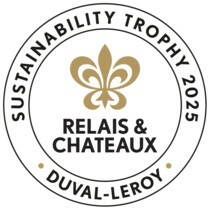Biodiversity
& conservation projectsThe biodiversity of Anjajavy
a treasure to discover and protect
Inventories and observations of Anjajavy’s flora and fauna show a high biological diversity with no less than 5 critically endangered, 14 endangered, and 13 vulnerable to extinction species. Most of these species are either endemic to Madagascar or the western coast.
Each year, our naturalist visitors’ observations – scientists or amateurs – unveil a significant number of new or undescribed species. Some of them, such as the rare explosive palm tree (Tahina spectabilis), , has attracted a lot of attention from the scientific community. You can already discover all the species on Inaturalist, our online inventory.
natural habitats
Forest
rare and precious
Classified by the WWF (World Wildlife Fund) among the global conservation priorities, the Anjajavy dry deciduous forest is home to a plethora of rare and endemic species of fauna and flora.
Mangroves
Vital to the ecosystem
The Anjajavy Protected Area is surrounded to the north and west by three large mangroves and their sinuous tidal channels. Hundreds of species of fish, shellfish, insects and birds rely on this habitat for food and shelter. These mangroves also actively contribute to carbon storage and sequestration.
A land of Baobabs
the emblematic tree of Madagascar
The Red Island boasts seven species of baobab trees, six of which are indigenous. In Anjajavy, you will find three species: the Grey (Adansonia madagascariensis), the African (Adansonia digitata) and the Fony (Adansonia rubrostipa). The last one is endemic to the western coast of Madagascar and is easily identified by its red bark and distinctive bottle-shaped trunk.
The Tsingy
Or Limestone forests
These wide areas of limestone and friable rocks formed millions of years ago when Madagascar separated from Africa. These rocks formations are also composed of fossilised shells, some of which may date back to the Jurassic period. Over the years, the rains and winds have carved the rocks into impressive karst pinnacles. It is even possible to see baobabs growing on these Tsingys while cruising on the Moramba Bay.
A private marine reserve
The jewels of the natural heritage
Anjajavy’s peninsula is bordered by seven isolated creeks on 3,500 meters extending to the Mozambique Channel. Along the coast, a 400-meter long strip of sea is protected from fishing and hunting since the creation of the Anjajavy protected area. The biodiversity within this marine reserve including a wide variety of tropical fish benefits from the proximity of mangroves and forests. Every year, marine turtles come ashore to lay their eggs and nest a few weeks. The hatching of the eggs and the race to the sea by the baby turtles offer one of nature's most unforgettable experiences.

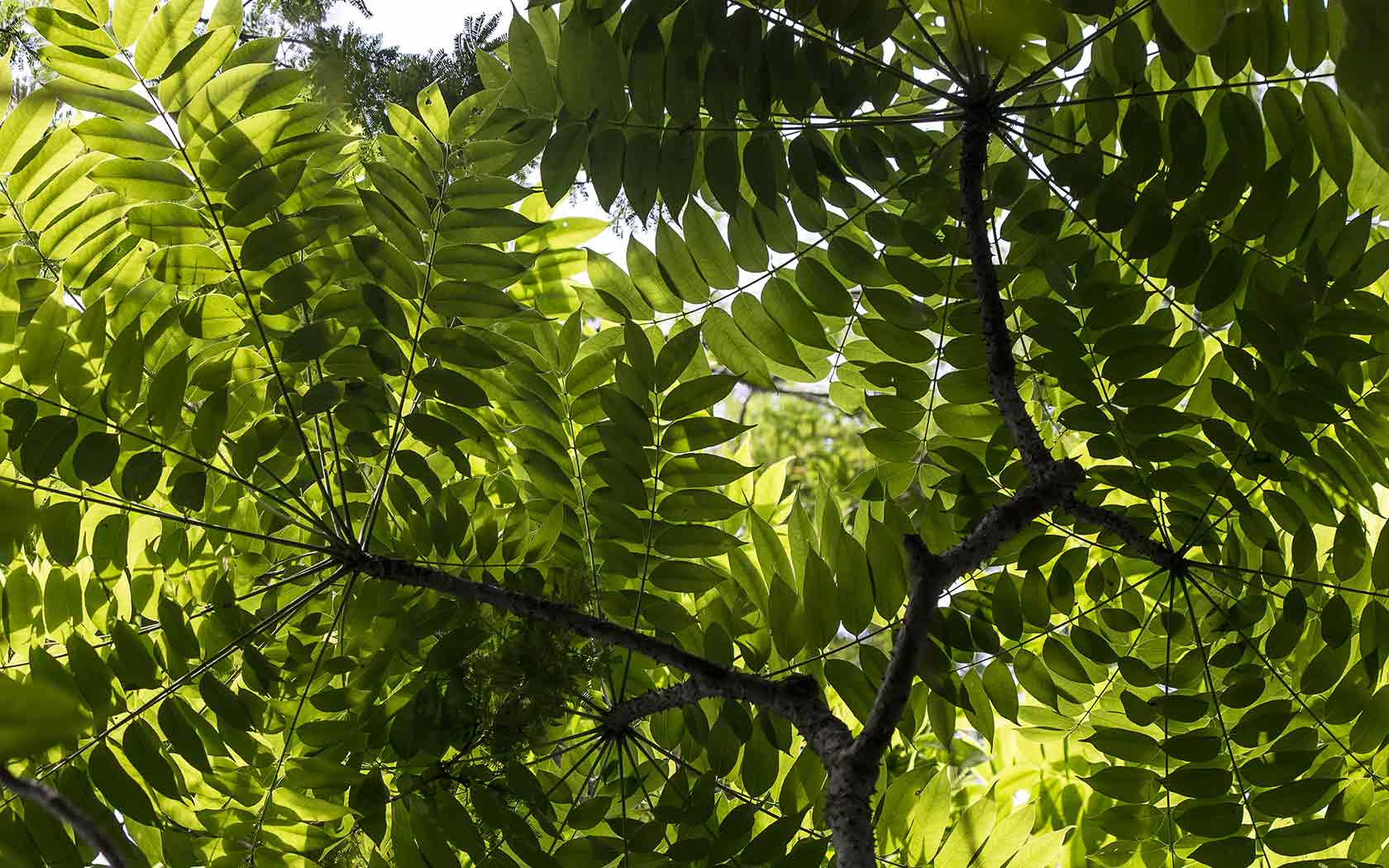
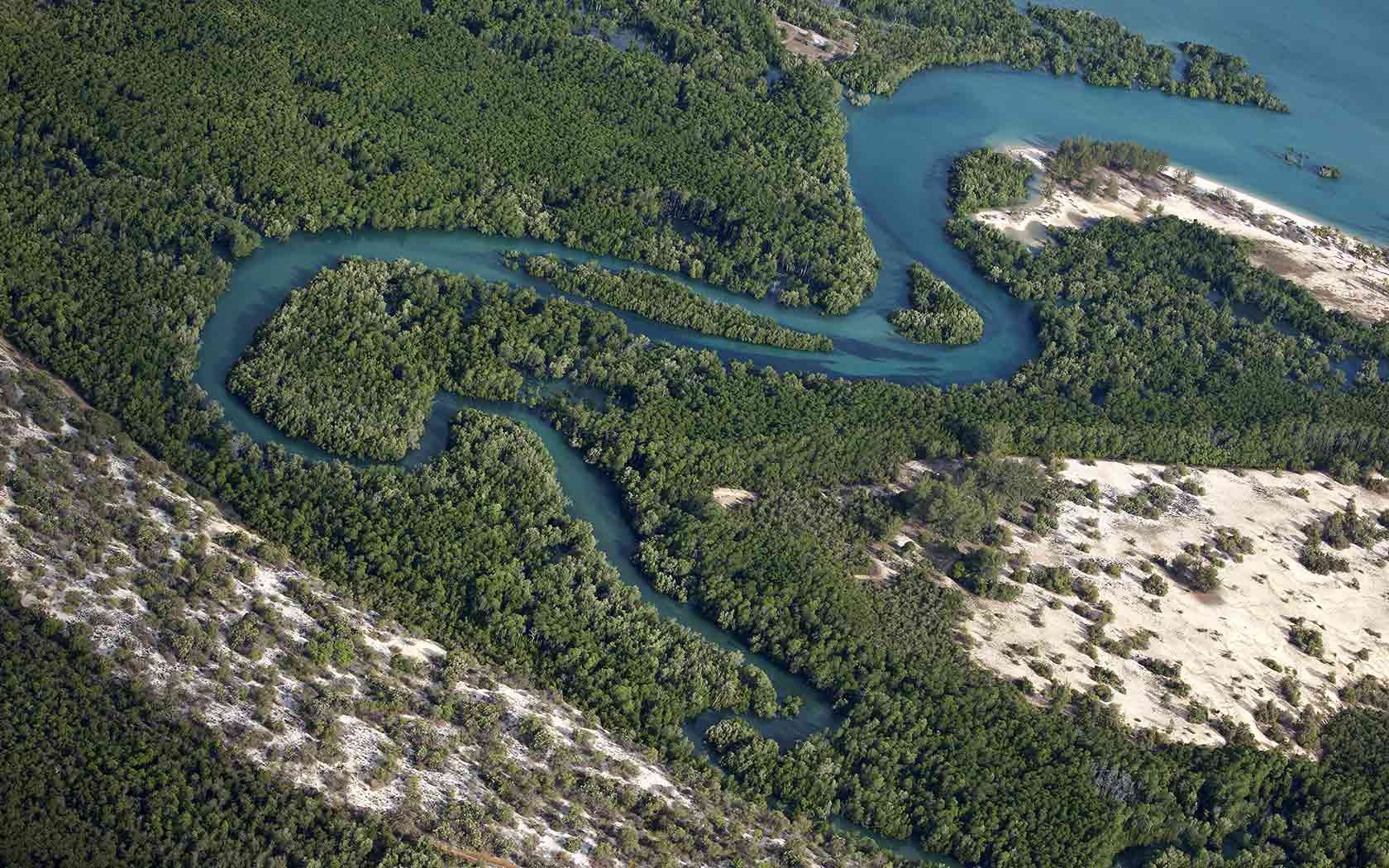
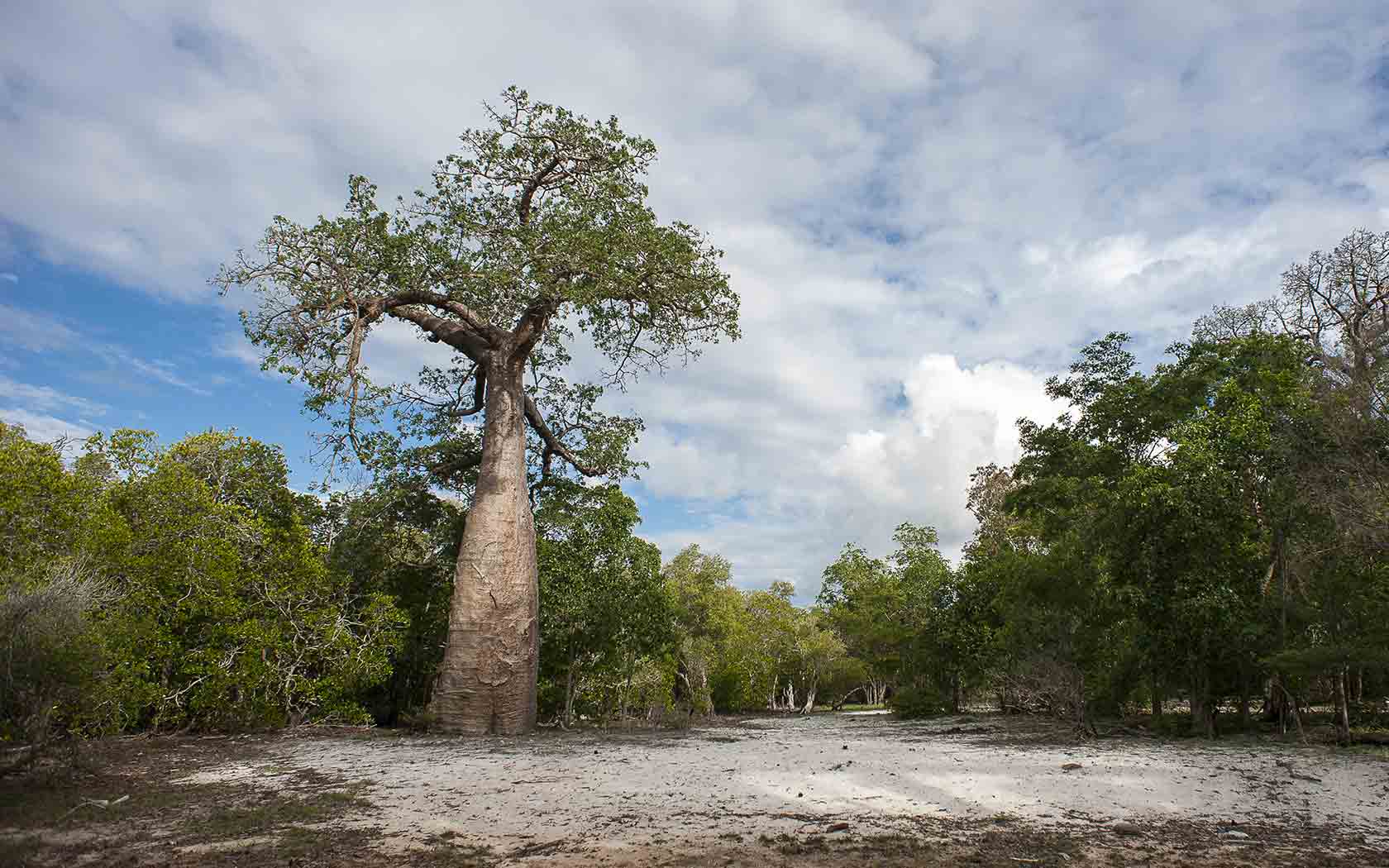
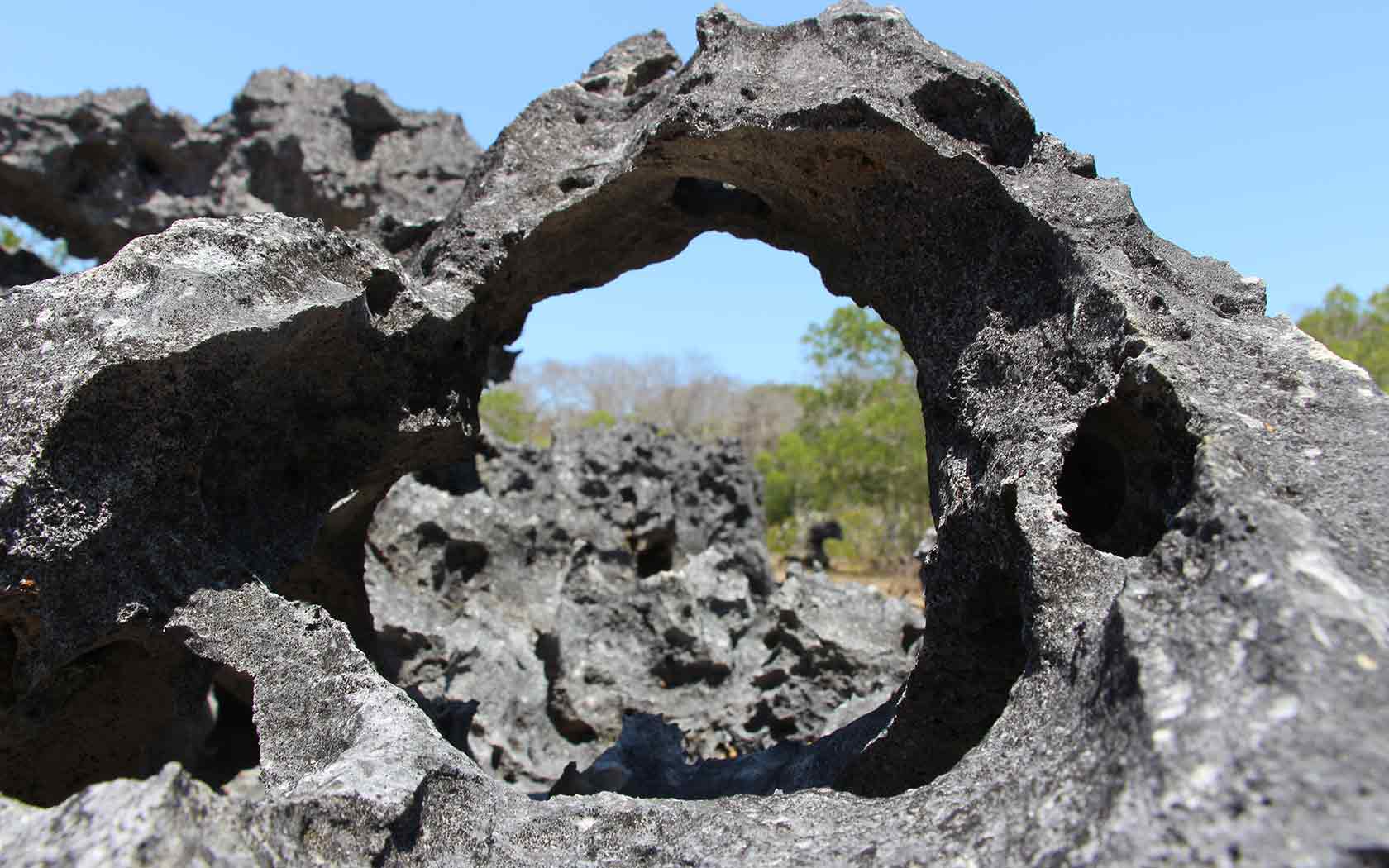


A forest
Rare and precious
Classified by the WWF (World Wildlife Fund) among the global conservation priorities, the dry deciduous forest is home to communities of rare and endemic species of fauna and flora.

Mangroves
Vital to the ecosystem
The Anjajavy Protected Area protects and is protected to the north and west by three large distinct mangroves and their sinuous tidal channels. Hundreds of species of fish, shellfish, insects and birds rely on this habitat for food and shelter. It is also one of the world’s most effective natural carbon sinks.

A land of Baobabs
Majestic emblem of Madagascar
The Big Island is the home of seven species of baobab trees, six of which are endemic to the island. In Anjajavy, you will meet three species: the grey (Adansonia madagascariensis), the African (Adansonia digitata) and the baobab fony (Adansonia rubrostipa). The last one, endemic to the ecoregion, is red and gold in colour with patterns that look like they were painted by hand.

The Tsingys
Or “forest of stones”
These vast areas of friable rock and limestone appeared millions of years ago and were formed when Madagascar separated from the rest of Africa. These formations are also composed of fossilized shells, some of which may date back to the Jurassic period. Over the years, the rains and winds have carved the rock, forming a landscape of supernatural beauty. It’s even possible to see baobabs growing on these Tsingys in Moramba Bay.

A private marine reserve
The jewels of the natural heritage
The private peninsula of Anjajavy le Lodge is bordered by seven isolated creeks on 3500 meters facing the Mozambique Canal. Along this coast, a 400 meter long strip of sea is protected from fishing and hunting since the construction of the protected area of Anjajavy. The marine wealth of this nature reserve benefits from the proximity of mangroves and forests. A wide variety of tropical fish can be found there in large numbers. Every year, marine turtles come to lay their eggs on these beaches, which are undoubtedly the same beach where they were born. The hatching of the eggs and the race to the sea by the baby turtles offer one of nature’s most unforgettable experiences.
the biodiversity
Lemurs
Birds
Reptiles & Amphibians
Mammals
The Lemurs
a happy cohabitation
Anjajavy peninsula hosts six species of lemurs. Most of them are easy to observe in their natural environment moving freely in our gardens and surrounding forests searching for food. Besides, these adorable and harmless animals usually leap from one tree to another around the lodge.
The most acrobatic lemur is the beautiful Coquerel’s Sifaka, an endemic species to the northwestern Madagascar. In the Protected Area, the Sifaka coexist naturally with the other diurnal and nocturnal species of lemurs.
A profusion of birds
a paradise for birdwatchers
Anjajavy’s inventories report the presence of more than 134 distinct species of birds in the forest. Naturalists and birdwatchers, many of whom are familiar with Anjajavy’s international reputation, can observe many magnificent and extremely rare species of birds.
Anjajavy is, for example, one of the best places to see the majestic Malagasy Fish Eagle (Haliaeetus vociferous), the timid Madagascar Crested Ibis (Lophotibis cristata), or the elegant Madagascar Blue Vanga (Cyanolanius madagascarinus).
Reptiles & amphibians
a wonderful diversity
Anjajavy’s tropical climate and sunny weather create the perfect environment for roughly forty species of reptiles and amphibians. Each tree can host a gecko or a stealthy chameleon.
Snake lovers can observe nonvenomous species such as the strange leaf-nosed snake or the fabulous Madagascar boa.
Sea turtles regularly come to lay their eggs on the peninsula’s beaches, and their hatching offers us an unforgettable spectacle.
Small and large mammals
essential in the ecosystem
Apart from the lemurs, the Anjajavy Protected Area also has 15 species of mammals. The largest mammal species comprise the elusive fosa (Cryptoprocta ferox), the deft Madagascar flying flox (Pteropus rupus) and sometimes the prodigious humpback whale (Megaptera novaeangliae).
As for the smallest mammals, the peninsula shelters hedgehogs, tenrecs, several western sheath-tailed bats, etc.
conservation projects
Giant tortoises
Aye-aye
Fosa
Reforestation
Madagascar giant tortoises
First rewilding program of the megafauna
Madagascar lost its entire community of large vertebrates between 500 and 1,300 years ago due to overexploitation of natural resources.
The giant Aldabrachelys gigantea tortoise is the only species of Madagascar’s megafauna that remained. In order to escape from men, they let themselves drift across the Mozambique Canal from Madagascar to seek refuge on the Aldabra Atoll.
The Anjajavy Protected Area was selected by Dr Miguel Pedrono, a conservation biologist, and the Malagasy Government to implement the first reintroduction project of giant tortoises back to Madagascar.
The long-term objective of this innovative project is to release the tortoises back into their natural habitats and to repopulate the forest. Since 2018, the 12 adult tortoises got accommodated to their habitat. Nowadays, the viable population of giant tortoises has progressively grown thanks to successful mating and hatching seasons.
The Aye-aye lemur
an outcast welcomed to Anjajavy
With its strange-looking whitish face, yellow eyes and skeletal fingers, the aye-aye (Daubentonia madagascariensis) is hunted throughout Madagascar because of superstitious beliefs and its reputation as a coconut thief. This nocturnal lemur is currently in danger of extinction.
The region of Antonibe – a rural commune that includes Anjajavy – is no different. This animal has disappeared from the Anjajavy’s forest, where the elderly remember seeing it regularly during their childhood.
To preserve the species, the University of Antananarivo and a research center at the University of Omaha in the United States initiated a research program in 2015 that led in 2019 to a project to reintroduce a female Aye-aye (Soalina) and her daughter (Kintana) into the Anjajavy Protected Area.
One of the main steps of this project was to raise awareness and educate the villagers surrounding of the Protected Area on the importance of conservation of the species.
The Fosa
not just a chicken thief
The Fosa (Cryptoprocta ferox) is the largest carnivorous mammal on the island of Madagascar. Despite its cougar-like features, it is actually more related to mongooses and civets. It usually preys on other mammals, reptiles, birds, fishes, etc. Yet, its diet can vary according to its habitat or the available food resource. Thanks to its slender body, semi-retractable claws and flexible legs, the Fosa easily climbs on the trees.
The Fosa is vulnerable to extinction as it is hunted for stealing chickens and cattle. A compensation fund has been set up to help villagers adapt to the presence of these animals (e.g. building special henhouses) and the Anjajavy Fosa Festival is organized every year to raise awareness among the inhabitants living around the Protected Area about the protection of these animals.
The reforestation campaigns
Efforts to conserve the biotope
Since 2009, Anjajavy le lodge has reforested more than 350,000 trees of non-invasive indigenous or pantropical species on the eroded areas surrounding the Anjajavy Protected Area. The lodge particularly tends to the nurseries. These plant species are selected according to the land and reforestation objectives.
Reforestation of fruit trees such as mango, lemon and cashew trees will provide agricultural income. Different varieties of mangroves are planted around wetlands, which will serve as a natural barrier against erosion, winds and rising water, and to contribute to evapotranspiration as well as the balance of ecosystems.
Ravoninahitrininarivo Ankorondrano Street,
Antananarivo 101, MADAGASCAR


